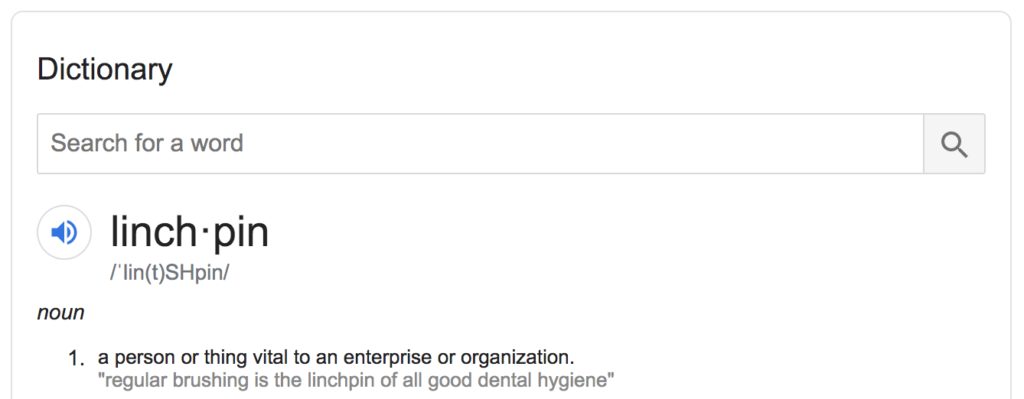Phil Knight, the founder of Nike, had $0 sales and his company was just him and his running coach when he met with Onitsuka Co. in Japan. Yet, he was able to persuade them to give him exclusive distribution rights to sell Tiger shoes in the US.
The supply chain is an underrated area of eCommerce that doesn’t get much love. Optimizing it can give your company a huge advantage, especially if you’re able to achieve a negative cash conversion cycle.
After my tweet on supply-chain management went viral, common questions I received were “how can I achieve a negative CCC ASAP?” and “how can I get my vendors to give me better terms?“.
Well, it’s certainly not easy. It takes a lot of time and hard work. But you need to become an indispensable member of your supply chain, the linchpin.
In this post, I’m going to go through how your eCommerce business can become the linchpin in your supply chain and how it can create a lucrative eCommerce flywheel.
What is a supply chain linchpin?

Your business needs to be vital to your supply chain. That’s the only way you will be able to dictate terms and be in an advantageous position.
It doesn’t matter whether you’re a manufacturer, distributor, or retailer, what does matter is:
- Your influence over customers (people who you sell to)
- Your influence over suppliers (people who you buy from)
Influence over customers
There are a number of ways to gain influence over your customers, and it’s arguably the more important of the two. If you have influence over a large number of customers, the rest of your supply chain will follow your lead.
Here some ways to gain influence:
- Government protection – Rogers and Bell protected by CRTC
- Unique product without comparable alternatives – Invisalign braces
- Exclusive distribution rights to a popular product – local bottling plant distributing Coca Cola
- Cult following – Supreme drops and Tesla presales
- Lowest prices – Walmart and Amazon relentless price-cutting
eCommerce companies typically focus their efforts on gaining influence over their customers but neglect their suppliers. Utilize your large and loyal customer base to gain influence over your suppliers.
Influence over suppliers
Supplier influence is incredibly underrated and way less talked about in the eCommerce world. There is really only one way to get true influence over suppliers, and that’s sales volume.
Having influence over your suppliers has huge benefits including:
- Better pricing – more profits or the ability to pass savings along to your customers
- Better terms/more credit – critical for optimizing your cash conversion cycle
- Faster delivery – suppliers prioritizing your orders so you can offer quicker fulfillment for your customers
- Exclusivity – suppliers giving your business the rights to sell a certain product
Being able to dictate terms to your supplier gives your business an incredible competitive advantage.
But what if you don’t have sales volume yet?
Assuming you’ve determined demand for a product, before jumping into an industry, assess the supply-chain. Ask yourself:
“Is this an industry where I could influence the supply-chain?”
Look for industries with lots of mom-and-pop suppliers that are fragmented with many players. It’s a lot easier to influence an entrepreneurial mom-and-pop supplier than an international conglomerate. Not to mention, a fragmented supplier base will give you much more negotiating leverage.
You may need to do a bunch of cold calling to narrow down an ideal supplier. Once you’ve found one, you’ll need to have them align with your vision.
Treat your suppliers like they’re your investors
I often see eCommerce businesses having only a transactional relationship with their suppliers. This is the wrong approach.
You need to start treating your suppliers like they’re your investors. In fact, if you plan on asking your supplier for better terms/more credit in the future, you are technically asking them to invest in your business.
Put together a pitch deck or business plan and present it to your supplier. Show them how you’re going to achieve rapid growth and the resulting sales you could be doing together. Show them why you’ll be bigger and better than all of their current customers. Keep them in the loop with regular updates and continue to build the relationship.
Pro-tip: maybe you have access to a certain market that the supplier doesn’t currently have exposure too (think geography, ethnic group or distribution channel)
If you don’t have the sales to entice your supplier, you need them to buy into your vision like Phil Knight did with Onitsuka.

Once you have influence over your supplier, you can pass on the benefits to your customers (better cost, exclusive products, and faster delivery). Customers will then end up choosing you over your competitors because of these benefits which in turn, increases your customer base.
In short, you create an eCommerce flywheel.
Final thoughts
Many eCommerce entrepreneurs focus heavily on influencing customers but neglect how important it is to influence suppliers as well.
I’ve worked with a range of suppliers, and I know first hand how beneficial it is to have full supplier alignment.
Become an indispensable part of your supply chain, the linchpin, and watch your business evolve into a valuable enterprise.
Hi there! I’m Jay Vasantharajah, Toronto-based entrepreneur and investor.
This is my personal blog where I share my experiences building businesses, making investments, managing personal finances, and traveling the world.
Subscribe below, and expect to get a couple of emails a month with some free, valuable, and actionable content.




One thought on “How to Become The Linchpin in Your eCommerce Supply Chain”